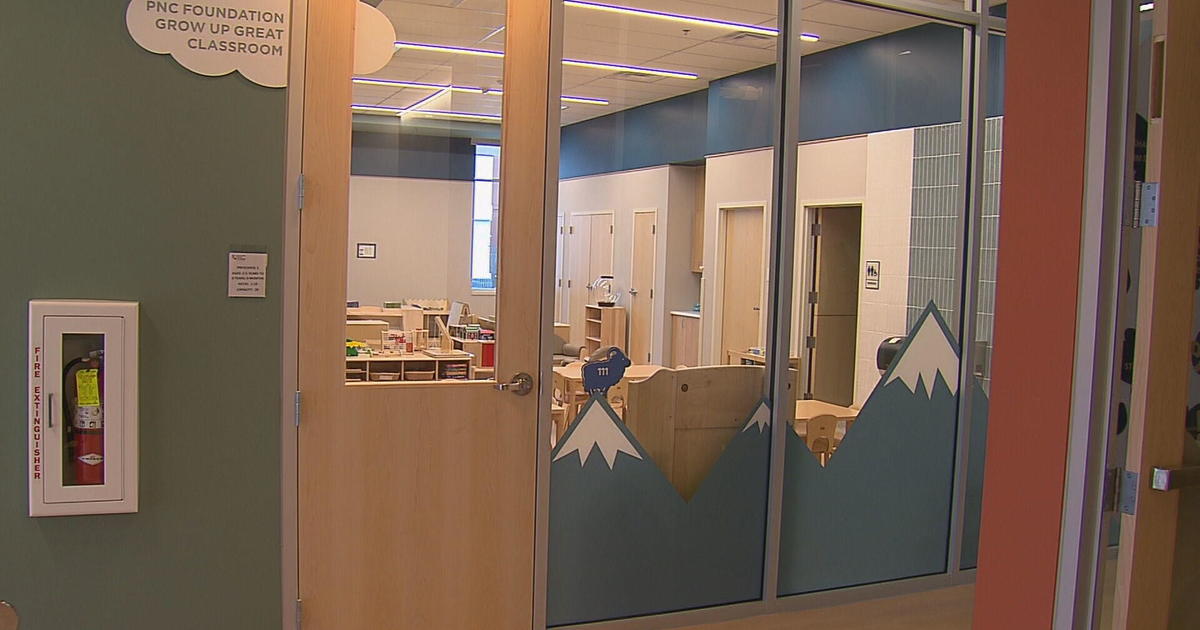Lightning Strike Gives Centennial Homeowner A Scare
CENTENNIAL, Colo. (CBS4) - Lightning is to blame for sparking several wildfires in Colorado recently, but in one Denver-area community a man says lightning came far too close to his home.
Centennial resident Vic Barclay had just gotten out of his hot tub in his backyard on Sunday when a storm with thunder and lightning was on the approach.
Once he was inside his home a lightning bolt struck on his property. At first Barclay didn't know where it had struck, he just heard car alarms going off in the neighborhood. When he looked out his back window he says he saw his shed in the backyard was on fire.
"I thought about grabbing the hose, but if you've seen the pictures the flames were so high that I was like 'There's nothing I can do,' " Barclay told CBS4.
Barclay ran out and grabbed two lawnmowers and a large container of gas from inside the structure. Everything else burned.
"When I opened up (the doors) it was kind of like a movie," Barclay said. He said the flames came shooting out of the door.
The fire then started spreading into a nearby tree, and fire crews from the Cunningham Fire District wasted no time in knocking down the flames.
"Once I knew everything was going to be okay, it was just interesting to watch. Because I've never seen a fire in my yard before," he said.
The shed had been there for 15 years, and now Barclay is trying to remember all the items he had in there.
This week is Colorado lightning safety week. Last year in the United States 26 people were killed by lightning, including one in Colorado. The state averages 3 fatalities and 13 injuries per year from lightning.
CBS4's Dave Aguilera recently shared the following facts about lightning.
What is thunder?
Lightning causes thunder. As a result of the tremendous heat with a lightning bolt, the air along and in the channel that lightning creates expands. This rapidly expanding air creates the sound we call thunder.
How is lightning formed?
Simply put lightning is a huge spark that occurs during a thunderstorm. The reason for this electrical discharge is the attraction of positive and negative electrons. The friction caused by the strong updrafts and downdrafts moving particles inside of a thunderstorm help to create an electrical charge. During this process positive charges (protons) build up in the top of the thunderstorm (cumulonimbus cloud). At the same time negative charges (electrons) gather at the bottom of the thunderstorm. Then, these negative charges are attracted to positive charges that are coming together on the ground. When the negative charges meet the positive charges, bingo, you have lightning. Have you ever been shocked by a tiny spark when you touch a doorknob or another person? That is somewhat the way lightning is formed. Think about it this way. When you walk across a carpet you create friction and attract negative charges. Then when you touch a doorknob, the negative charges are attracted to the positive charges in the doorknob and that creates a small spark.
What is a thunderstorm?
A simple explanation is a thunderstorm is any storm that produces thunder. But, it is much more than that. Thunderstorms are a complicated mix of water, ice, wind and heat. There are several ingredients that a thunderstorm needs to develop. A thunderstorm needs moisture to form clouds and rain, unstable air, warm air that can rise rapidly through cooler air in the atmosphere and lift. Lift could be mountains, heating from the sun, or cold or warm fronts. Some meteorologist, look at thunderstorms as a cooling engine for the Earth. The thinking is that a thunderstorm is a huge natural pump. Think of it this way, high up in the atmosphere say 30, 40 or 50 thousand feet up, close to the top of some of these storms, the air can be as cold as 90 to 100 degrees below zero! That's cold! At the same time, especially on a hot summer day, temperatures here on the ground can be 90 to 100 degrees above zero. Thunderstorms can move this heat on the surface of the earth up into the upper levels of the atmosphere quickly. This is called "convective heat transport". Without thunderstorms some scientists and meteorologist estimate that the mean temperature of the earth could rise as much as 20 degrees. That would make it impossible to live in certain areas of our planet.



